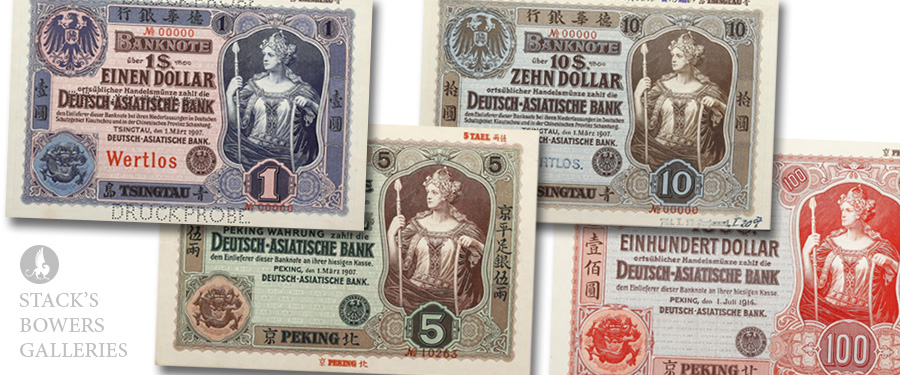
Like other European nations, Germany tried to expand its presence in the Far East in the second half of the 19th century. In China, Germany took part in the Shanghai International Settlement, an enclave in Shanghai from which European governments were allowed to trade. It was here that in 1889 the Deutsch-Asiatische Bank was founded. It had been in the making for the previous decade, but its establishment had been delayed several times. According to Maximilian Müller-Jabusch in his 50-year history of the bank, the main reason for the initial setup of the bank was to finance railroad construction; when the bank got up and running it became more focused on trade financing. Regardless, it played an important role in the development of railroads in China through its banking. Even though Germany lost its colonies at the conclusion of World War I, the bank continued operating in a much-reduced capacity and was eventually merged with Deutsche Bank in the late 1980s.
Soon after its establishment in 1889 the Deutsch-Asiatische Bank opened branch offices throughout the region. In China, offices were opened in places such as Tianjin, Hankou, Qingdao, Beijing and Guangzhou. Other branch offices were opened in Hong Kong, Yokohama, Singapore and elsewhere. In July 1906, the German government authorized the issuance of banknotes, which were first put into circulation in June 1907 (the first series of notes are dated March 1, 1907). Curiously, there were two different sets of notes. The majority were denominated in (Mexican) Silver Dollars, while a smaller group were denominated in Taels, a traditional Chinese currency that typically circulated in ingot form.
The banknotes were printed in Germany by the printing firm of Giesecke & Devrient. The design was standardized across all denominations, with a seated image of Germania at right and the Imperial Eagle and Chinese Dragon at left on the front. The back design varies among the different denominations. To signify the international nature of the bank, the notes have text in three languages: German, Chinese and English. The banknotes were delivered to the bank fully printed except for the signatures of two bank officials, which were to be placed on the note upon issue.
There were five branches of the Deutsch-Asiatische Bank that issued these notes. Qingdao (Tsingtau in German) had the largest issue, followed by Shanghai, Tientsin, Hankou (Hankow in German) and Beijing (Peking in German). All five branches issued notes denominated in Dollars, while the branches in Shanghai, Peking and Hankow also issued notes denominated in Taels. Dr. Arnold Keller identified a total of 57 notes in the series but does state that some may not exist. A second series with identical design was issued dated July 1, 1914, but it is unclear if any entered circulation. Issued notes are extremely rare for most issues, and most examples in the marketplace today are remainders. The Pick catalog may cause some confusion as these are listed in two different places for no apparent reason; the notes from the Tsingtau office are listed in the general volume under Kiau Chau, while notes from other branches are listed in the specialized volume under China.
The Al Kugel Collection features a large variety of these historic banknotes, the first group of which is offered by Stack’s Bowers Galleries in the Spring 2024 Maastricht Auction. Offerings of the Deutsch-Asiatische Bank include lot 50222, a 1907 1 Dollar Specimen from Tsingtau in PMG Choice Uncirculated 64, lot 50223, a 1907 10 Dollar Specimen from Tsingtau in PMG Choice Uncirculated 63, lot 50224, a 1907 100 Dollar Remainder from Peking in PMG Choice Uncirculated 64 and lot 50225, a 1907 5 Taels Remainder from Peking in PMG About Uncirculated 53. Additional notes from the Al Kugel Collection will be offered in future Stack’s Bowers Galleries auctions. To consign your world paper money alongside this impressive collection please contact Dennis Hengeveld at dennis@stacksbowers.com.





